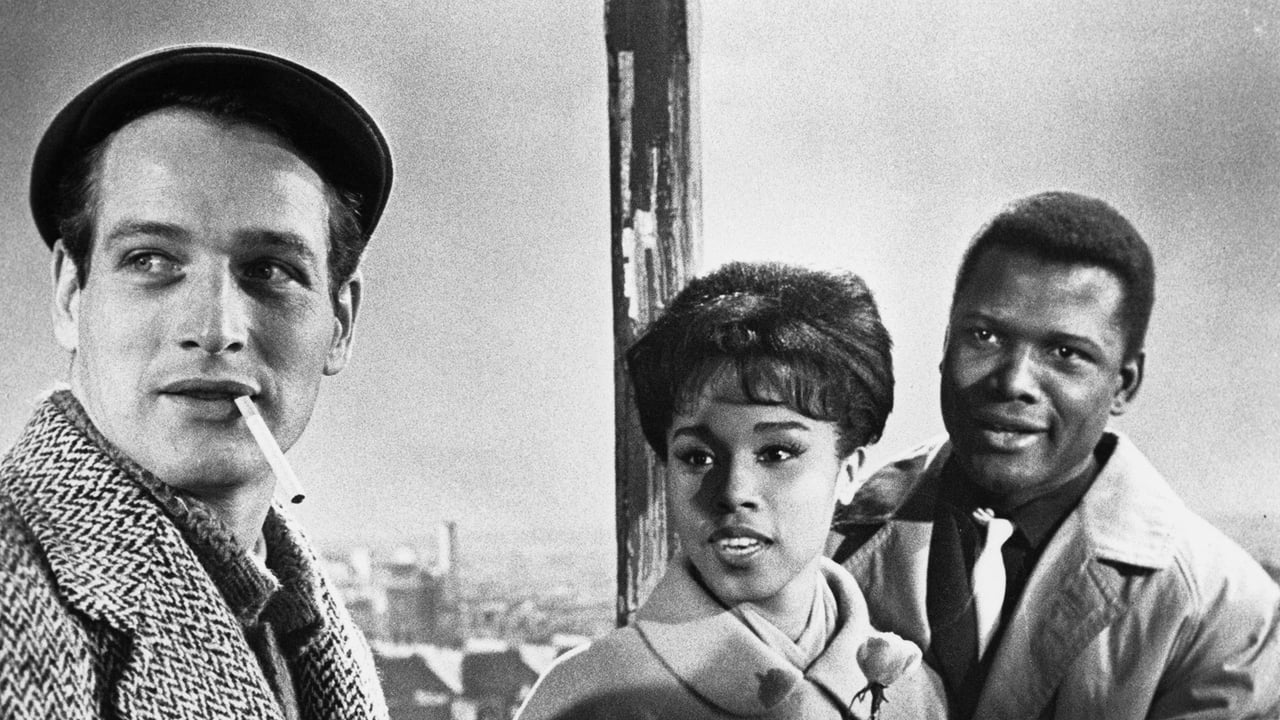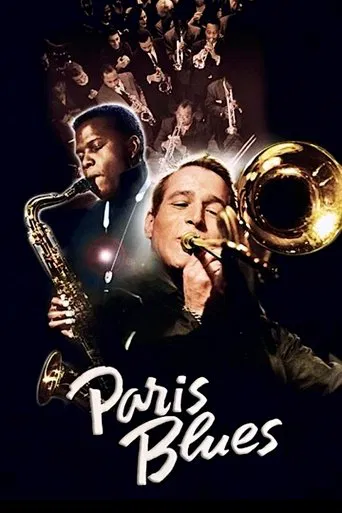

If you love jazz music, Paris, Paul Newman, Louis Armstrong, Sidney Poitier and Joanne Woodward, then this movie is perfect. The story is very simple and very stylish and ingeniously filmed. All the merit of Martin Ritt, the director, and Christian Matras, cinematographer. Music by Duke Ellington, who is the true pianist, along with eight other non-credited musicians.
... View MoreLocation-rich, jazz-inspired melodrama about a café band on the Left Bank of Paris led by two Americans: a white, moody trombone player and his only true friend, a black saxophonist who has deliberately blinded himself to the plight of minorities. Paul Newman and Sidney Poitier are well cast, but their scratchy friendship has a false-front (it never feels real or lived in); right at the beginning, the men get into a fight over their music, which confusingly flares up out of nowhere and dissipates in much the same fashion. The pair quickly take up with two female tourists (matched as if by skin color), but lovemaking and sight-seeing take a backseat to squabbles over their differences. Martin Ritt-directed soaper is not nearly as full of music as it is talk, which is a shame considering the dialogue is so banal it overwhelms the picture. The women's roles are particularly ineffective, with Joanne Woodward looking lost in an unplayable role and Diahann Carroll exasperating as a schoolteacher who seems to want to start a race war. Duke Ellington received an Oscar nomination for his score, fitting since the sounds (and also the sights, as photographed by the efficient Christian Matras) are really all the film has going for it. *1/2 from ****
... View MoreTwo visiting American girls strike up romance with two working American musicians, and it's "An American in Paris" times four. That means four times the love, four times the sadness, four times the desires, and four times the blues. Real life American couple Paul Newman and Joanne Woodward are joined by rising stars Sidney Poitier and Diahann Carroll, exploring the city of lights and romance, discovering each other and themselves, learning a little something about a society not quite as conservative as what they are used to, and hopefully finding out some valuable truths in the meantime.This is a somewhat plot less romantic drama, opening its characters to a life far different than what they are used to, and yet not finding at least the same types of prejudices that were rampant on the other side of the Atlantic. But when you are surrounded by artists of all kinds, the only thing you see is the art, and often skin color becomes like the frosting on the cake. Each of the couples find their differences, question their ideas about commitment, and in the end, it's a holiday romance with bittersweet jazz (brought on by "Sachmo" himself) and that downbeat note that brings on the blues.What you have here is an art house film made mainstream because of its cast, a delight to the ear but sad for the eyes because it's a black and white view of Paris, maybe a metaphor for the black couple and the white couple dealing with the highs (jazz) and the lows (blues), or from one extreme to the other with no real middle. I think this is a film you'd either have to be in a certain kind of mood to appreciate, or maybe revisit it several times. This is definitely not "Blues for dummies".
... View MoreFor starters, this is one of those rare movies that would not have been as good if it had been shot in colour. B&W somehow fits the mood, the story and the setting. Yet it's not really a sad or dark story. As in many older B&W films, the lighting is magnificent with highlights and shadows and textures that simply aren't workable in colour. The performances are universally superb. The script is free of the usual clichés. And the music is great. (How could you possibly make a bad movie with the likes of Louis Armstrong, Paul Newman, Joanne Woodward, Sidney Poitier and Diane Carrol?) Nor, in that era (1961), did Hollywood zoom in and linger obsessively on sexual acrobatics. This is a mature, sexy film without any graphic sex. Those were the rules back then and this film is the better for them. A thoroughly enjoyable movie with a great cast that has stood the test of a half century very well indeed.
... View More